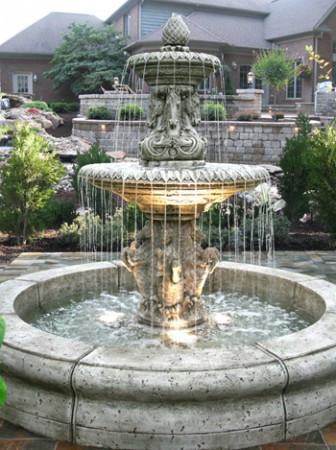How to Design A Wellness Room In The Workplace
Designing a wellness room in the workplace is a strategic initiative that not only underscores a company's commitment to its employees' health and well-being but also contributes significantly to enhancing overall productivity and morale. This dedicated space serves as a sanctuary where employees can take a momentary break from their work, recharge, and return to their tasks with renewed energy and focus. Below, we outline key considerations and steps to create an effective wellness room, incorporating essential elements such as water fountains and massage chairs.
1. Understanding the Purpose
Before embarking on the design, it's crucial to understand the multifaceted purpose of a wellness room. This space is intended to offer employees a quiet and comfortable area to relax, meditate, engage in light stretches or yoga, and momentarily step away from the stressors of their work environment. It's about creating a holistic space that supports physical, mental, and emotional well-being.
2. Planning the Space
Assessing Needs and Preferences: Start by surveying employees to understand their needs and preferences. This feedback will be invaluable in tailoring the room to suit the diverse wellness practices of your workforce.
Choosing the Right Location: Select a location that is easily accessible, yet sufficiently removed from the hustle and bustle of the workplace to maintain a tranquil atmosphere. Ideally, it should be a space with natural light and a view of the outdoors to foster a connection with nature, which is inherently relaxing.
3. Essential Components
Comfortable Seating: Incorporate a variety of seating options, including comfortable chairs for reading or meditation, bean bag chairs, as well as mats or cushions for yoga and stretching.
Water Fountains: Installing a water fountain serves a dual purpose. The sound of flowing water is universally soothing and can significantly enhance the room's calming atmosphere. Moreover, providing a hydration station encourages employees to drink more water, which is essential for overall health.
Massage Chairs: Massage chairs are a luxurious addition that can provide immediate relief for physical tension and stress. Even short sessions can help reduce muscle stiffness and pain, promoting physical and mental relaxation.
Adjustable Lighting: Lighting plays a crucial role in creating the right ambiance. Install adjustable lighting that can be dimmed to foster relaxation or brightened for reading and other activities.

4. Designing for Relaxation
Color Scheme: Opt for a calming color palette that includes soft, neutral tones or cool hues such as blues and greens, which are known for their soothing properties.
Natural Elements: Incorporating plants and natural materials can enhance the sense of tranquility in the room. Plants not only purify the air but also add to the visual appeal of the space.
Personalization: Allow for some level of personalization within the space. This could include a wall where employees can post positive affirmations or artwork that inspires peace and happiness.
5. Technology for Wellness
While the wellness room should be a tech-free zone to encourage disconnection from work-related stress, certain technological additions can enhance the relaxation experience. Consider a sound system for playing soft music or nature sounds, and provide access to guided meditation or breathing exercise apps for those who may want to use them.
6. Encouraging Usage
Create Guidelines: To ensure the wellness room serves its purpose without becoming a source of stress itself, establish clear guidelines for use. These might include rules about noise, the duration of use, and the type of activities that are appropriate for the space.
Promote Awareness: Regularly communicate the availability and benefits of the wellness room to employees. Encourage managers and team leaders to lead by example by utilizing the space and sharing their positive experiences.
Solicit Feedback and Evolve: Continuously seek feedback from employees about the room's features and ambiance. Be open to making adjustments to ensure the space meets the evolving needs of your workforce.
Conclusion
A well-designed wellness room is more than just a physical space; it's a tangible reflection of a company's investment in its employees' holistic well-being. By thoughtfully incorporating elements like water fountains for their soothing sounds and hydration benefits, and massage chairs for physical relaxation, you create an oasis that supports the mental, emotional, and physical health of your team. This not only enhances job satisfaction and engagement but also contributes to a more harmonious and productive workplace environment. Remember, the goal is to create a space that employees want to use, one that genuinely contributes to their well-being and helps them perform at their best.
